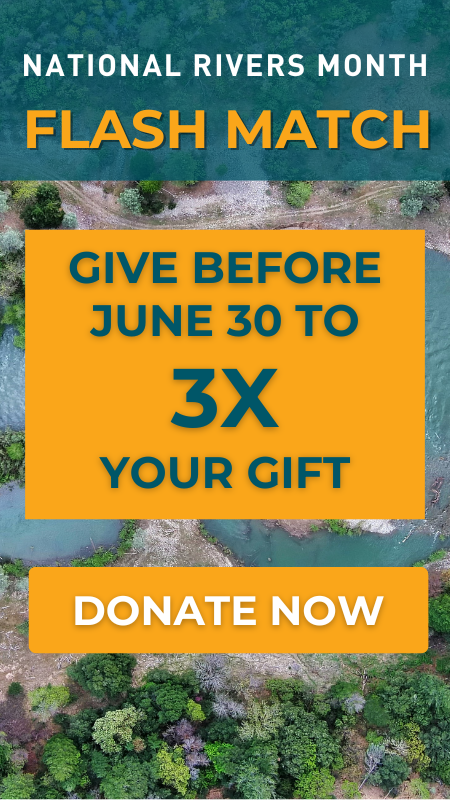Lake Mead Close to the Critical 1075 Elevation
June 19, 2015
Contact:
When Lake Mead drops to 1,075ft elevation, The Bureau of Reclamation may reduce water deliveries to Arizona and Nevada. Action and funding is needed now to protect the health of the Colorado River and the Southwest Economy.
(Denver, CO) – The 15 year drought gripping the southwestern United States will soon signal increased urgency about the need to address the effects of outdated water use and the threat to communities, agriculture, the economy, and healthy rivers.
The water elevation in Lake Mead is predicted to reach an all-time low in the coming days at 1,075 feet, potentially triggering far-reaching requirements by the Bureau of Reclamation to enforce painful limitations on water delivery to cities, farms, and residents of the southwest. American Rivers encourages Reclamation and water providers to swiftly begin implementing the recommendations found in the Bureau’s own Moving Forward report, released in early May, to begin the work of funding and driving solutions to use water more wisely and protect rivers in the west.
“1075 is a clear call for action. To avoid what could lead to a “domino effect” and further water shortage in the Colorado River Basin, we all need to get to work funding and implementing solutions that exist today.” ” said Matt Rice, Colorado River Basin Director with American Rivers. “Between the recommendations found in the Bureau’s Moving Forward report, and the framework set forward in the Hardest Working River in the West white paper, authored by American Rivers and Western Resource Advocates, we have what we need to proactively address water supply needs through aggressive conservation strategies and other cost effective and smart solutions.”
Moving Forward highlights a series of steps that should be implemented now, including:
- Implementing or expanding water conservation, efficiency, and reuse programs in cities and towns across the basin
- Increasing local, state, and federal commitments to funding and implementing conservation efforts, and
- Expanding agricultural incentives, technology, and stewardship practices that save water in this important sector.
The time is now. The science about how to reduce water waste and outdated management practices is in, and the task of designing, funding, and implementing these solutions is long overdue. At risk is the Colorado River’s $1.4 trillion economy (Arizona State University), a vibrant culture of agriculture and recreation, as well as the intrinsic benefits of healthy rivers for all citizens of the west and the wildlife that depends on them. We must urgently begin the process of implementing real solutions, before the downward spiral inflicts more lasting, permanent harm to this critical region of the country.
About American Rivers
American Rivers protects wild rivers, restores damaged rivers, and conserves clean water for people and nature. Since 1973, American Rivers has protected and restored more than 150,000 miles of rivers through advocacy efforts, on-the-ground projects, and an annual America’s Most Endangered Rivers® campaign. Headquartered in Washington, DC, American Rivers has offices across the country and more than 250,000 members, supporters, and volunteers.
Rivers connect us to each other, nature, and future generations. Find your connections at AmericanRivers.org, Facebook.com/AmericanRivers, and Twitter.com/AmericanRivers.


